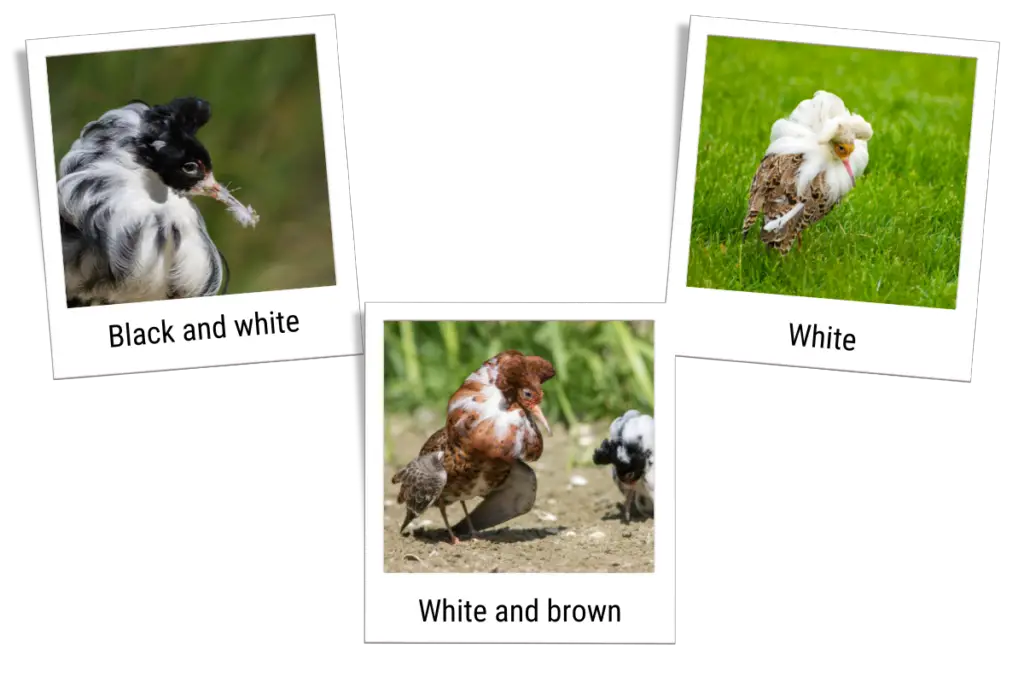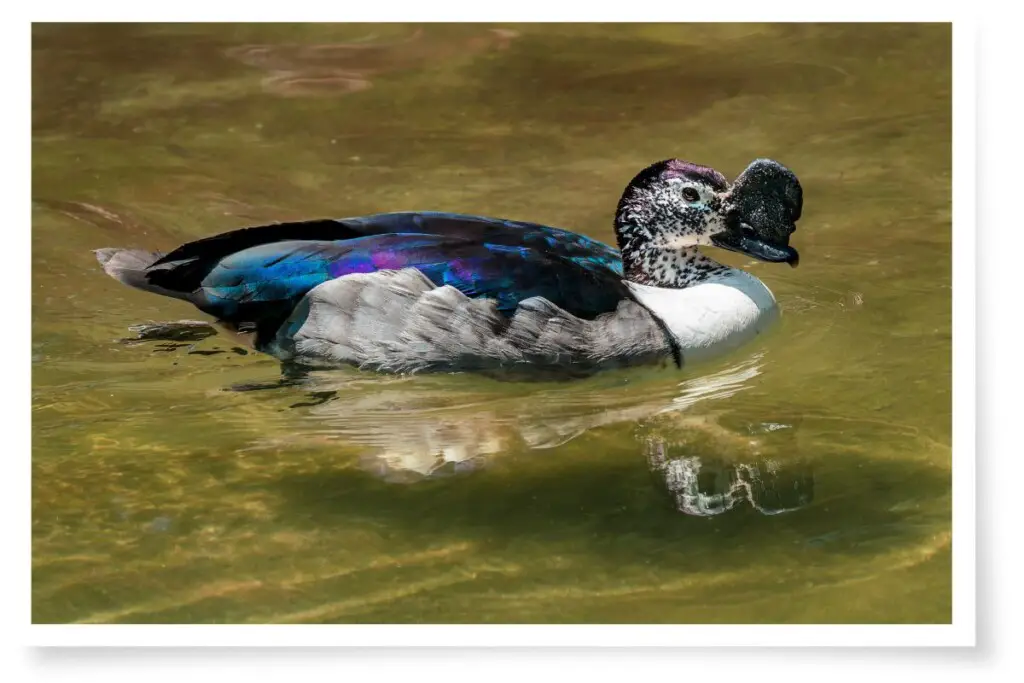Most birds we see every day are fairly normal; they have a similar shape, their feathers are ordinary, and generally, we take them for granted. However, in some parts of the world, there are birds that almost defy reality. In this article, you will meet 10 unique birds that you won’t believe.

1. Silver Pheasant
The first unique bird on our list is the Silver Pheasant. Pheasants are known for their brilliant colorings and this Southeast Asian bird is no exception.

The male silver pheasant is not very brightly colored but the pattern on its wings, back, and tail is mesmerizing. It’s almost as though their feathers were meticulously painted by an artist with a thin brush.

The scarlet wattles around their eyes are another striking feature of this bird and the crest falling stylishly off the back of its head like a lush head of hair, completes its impressive look.

The females of this species almost outdo the male as far as coloring goes:

The silver pheasant also has quite a unique call. It sounds almost like a cross between a duck and a hyena.
Check out the unusual and shocking birds in this article I have written.
2. Ratchet-tailed Treepie
The Rachet-tailed Treepie is a medium-sized bird also found in Southeast Asia. The unique feature of this bird is its tail which has pointed extensions resembling the teeth of a ratchet wheel.

Those tail feather extensions would most likely make flying difficult as they would create a lot of drag. However, these birds spend their time in dense forests, leaping from tree to tree so streamlined tail feathers are not necessary.
Ratchet-tailed treepies have developed the strange technique of jumping from a branch without spreading their wings to slow their fall. Watch the video below to see this strange technique in action:
These birds are members of the Corvidae family which includes crows, jays, and magpies. If not for their tails, they might be confused for a Drongo.

Not sure of the difference between a Crow, a Raven, and a Blackbird? Check out this article.
3. Oriental Bay Owl
This smallish owl could be something right out of a horror movie. Large blackish or dark brown eyes, a squarish facial disc, and small ear tufts protruding from the sides of its head.

Like the previous two birds, these owls can be found in Southeast Asia as well as down into Singapore and Indonesia.
The oriental bay owl has a wide variety of calls and during the breeding season has been described as sounding like half a dozen cats fighting.

4. Ruff
The Ruff is not only unique in its name but also in its appearance. When in breeding plumage, the males look very extravagant. This bird was named for the showy ruff of feathers that flare around and under its head.

The head tufts and facial wattles of each male differ from individual to individual. The color and pattern in their ruffs also vary greatly in each bird.

Ruffs are found in northwestern and northern Europe, Siberia, the Chukotskiy Peninsula, and the Sea of Okhotsk. They winter in western Europe, the Mediterranean, and sub-Saharan Africa through the Middle East to the Indian Subcontinent and SE Asia. They also winter in the Greater Sundas Islands and the Philipines.
Female ruffs are more plainly colored but still beautiful in their own right. They are dark brown above with rufous edging on each feather. They can also have blotches of brown on their chests.

Male ruffs have a very distinctive mating display. They dance, jump and run about in a seemingly chaotic manner in a lek (communal display area). Watch the video below to see them in action:
5. Comb Duck
South America is where you’ll find this strange creature. The comb duck is unique for its large, fleshy caruncle at the base of its bill. Both males and females have it though it is larger on male ducks.

The large comb on the bill becomes larger on males during the breeding season. This is most likely the reason for its existence; males with a larger, more impressive caruncle will attract females more effectively.
These ducks have impressive plumage with iridescent violet, purple, bronze, and green on their back feathers.

Comb ducks (also called Knob-billed Ducks) are normally silent unless threatened or displaying.
6. Standard-winged Nightjar
Now how these birds got their name I will never know as their wings are anything but standard. These African birds are indeed unique.

During the breeding season, male birds of this species have extremely elongated second innermost primary feathers that are webbed at the tips. It almost appears as though the bird is carrying around a couple of flags.
You might think that these lengthy feathers make flying difficult but they seem to manage:
It seems the extended primary feathers restrict their wing movement quite a bit but they are still able to fly. Of course, these feathers are purely for enticing the females to mate.
The female standard-winged nightjars are slightly smaller and paler than the males and do not have the long primary feathers when breeding:

7. Horned Guan
The horned guan might belong more in an article about strange birds rather than unique ones but here it is nonetheless.

These birds would be unremarkable if not for the 6 cm (2.4 in.) reddish-orange horn on their heads. Both males and females have it, though it is smaller in female birds.
These birds are found in the humid evergreen mountain forests of southeast Mexico and Guatemala. Unfortunately, they are classed as endangered.

Horned guans make a variety of sounds, some sounding almost like the grunts of a pig.
Another call the male birds make is akin to that of a cow mooing or a cooing dove:

Another unusual sound made by horned guans is this rasping, guttural noise that sounds a lot like someone playing the guiro:
Hear the calls of 10 common New England species in this article here on the blog.
8. Golden-headed Manakin
The male golden-headed manakin is the only manakin with an entirely black body and a bright, golden-yellow head.

You may have seen the Red-capped Manakin in Sir David Attenborough’s Our Planet, ‘moonwalking’ across a branch to impress a female. Well, the golden-headed manakin has similar moves:
This skillful dance is to impress females and entice them to mate. Female golden-headed manakins are not as striking as the males and are similar to females of other manakin species.

These incredible little birds are found in Panama, Colombia, Venezuela, Ecuador, Peru, Brazil, Guyana, Suriname, and French Guiana. They live in tropical lowland evergreen forests.
9. Victoria Crowned Pigeon
Not only are these the largest pigeons on the planet at around 66-74 cm (2.2-2.4 ft), but they are also adorned with the most amazing crests of feathers. These Papua New Guinean natives are truly unique birds.

Both the male and female birds of this species have a crest of white-tipped feathers that fans out above their heads. They also have a striking black mask extending from the base of their bills up around their eyes and coming to a point at the back of their heads.
Victoria crowned pigeons also have stunning red or purplish-red iris.

These amazing pigeons live in swamps and sago palm forests, generally at low altitudes. They feed on fallen fruit, berries, and seeds they forage from the forest floor.
10. Bornean Peacock-Pheasant
These incredible birds from Borneo are going to finish this list off in style. Aptly named, they have the shape and size of pheasants with the striking beauty of peacocks.

This endangered species occurs in the lowland forests of Borneo; their exact range is uncertain.
Females are not as colorful as males but are still pretty birds.

Like peacocks, the male Bornean peacock pheasants have eye-like patches called ocelli on their feathers which are metallic blue-green. These ocelli make a stunning display when the feathers are flared out.
Male birds also have hair-like feathers which form a forward-facing crest that hangs over their faces and beaks.

These adornments are for impressing females of the species in mating displays. I guess she becomes mesmerized by the glistening, metallic colors and is unable to resist, as the female in the image below seems to be:

Further Reading
If you enjoyed these birds, you might be interested in these other articles here on Birdwatch World:
- Singing Wings – The remarkable sounds of the Club-winged Manakin
- 10 Mind-blowing Birds Of South America You Won’t Believe
- The 9 Dumbest Birds In The World And Why They’re Not
- Pelican Species Of The World – Did you know there are 8 of them?
- 11 Types Of Small Birds That Can Be Found In The UK
References
- Birds Of The World – The Cornell Lab of Ornithology
- Bird sounds sourced from – xeno-canto.org
- Additional bird information – Wikipedia
- Some bird images embedded from flickr.com
